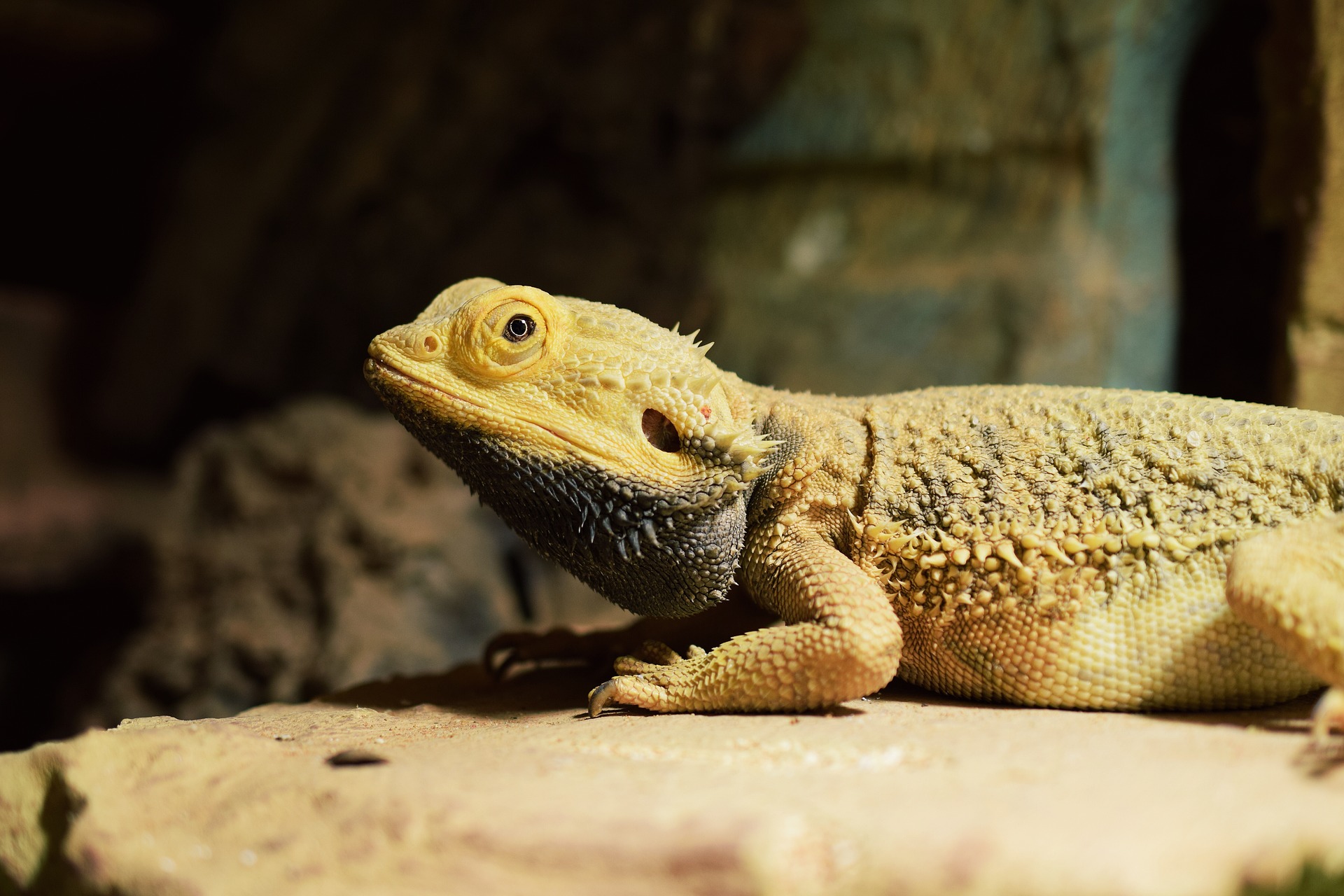
Photo courtsey of Mike Aixklusiv
Picture this. You’ve had your pet lizard for a while and everything seems fine. You notice that its legs look a little funny, but you figure it’s nothing to worry about. Then, eventually, your exotic pet stops climbing and has difficulty walking. What happened? If this scenario sounds familiar, your lizard may have metabolic bone disease.
Fortunately, you can prevent this from happening. Get the right lizard care information to keep your pet’s bones healthy.
MBD is not just one disease
Although metabolic bone disease tends to be talked about like it’s a specific disease, it’s actually a collection of bone diseases that each have different causes. That’s where treatment can become tricky. What helps for one variety of bone disease may actually exacerbate another variety.
The good news is that in the majority of cases, the MBD that lizards develop is caused by one primary cause, and that is nutrient deficiency. There are two nutrients that are needed to prevent bone disease in lizards, and they are the same as those needed for human bone health, calcium and vitamin D.
In fact, the cause for these nutrient deficiencies are also similar to human causes of calcium and vitamin D deficiency. They are lack of dietary calcium and lack of sufficient lighting. Let’s discuss what to do about each of these issues when they affect your lizard.
When your reptile has bone disease from poor diet
Reptiles need calcium in their diets in order to keep bones healthy. Unfortunately, a captive diet simply can’t provide the same nutritional variety as what a wild lizard eats. This isn’t usually an issue for snakes because they get calcium from the bones of the mice they eat.
For lizards, however, mice and bones are not a typical meal. If you are new to lizard ownership, you’ll be happy to know there is an easy solution to this. All you have to do is dust your exotic pet’s food with calcium powder. It’s usually applied to live insects before feeding. For herbivores, the calcium can be applied to vegetables or fruits.
Although it’s a rarer form of MBD, some reptiles develop renal disease that leads to bone weakening. When that happens, adding extra calcium to the diet could actually exacerbate the symptoms. If you’ve been applying calcium regularly and your lizard appears to have bone problems, get a diagnosis from an exotics vet.
When your reptile has bone disease from insufficient lighting
Like humans, lizards get much of their vitamin D from exposure to unfiltered sunlight. As you probably guessed, captive lizards don’t get out in the sun much. But you can prevent vitamin D deficiency by providing them with the right lighting combinations.
Many lizards require two distinct light sources. They need a UVA light that provides heat for basking, and they need a light that provides necessary UVB exposure. Vitamin D promotes the absorption of dietary calcium, keeping bones strong.
Recognizing metabolic bone disease
Signs of bone disease include:
- Swollen legs
- Bumps on leg bones, the spine, or the tail
- Bowed legs
- Arched spine
- Softening of the jaw
- Unusual gait when walking
- Leg and toe twitching
- Inability to grip and climb
If you see any of those signs, take your lizard to a vet for evaluation. For prevention, chat with our team at The Tye-Dyed Iguana about proper lizard nutrition and lighting.
